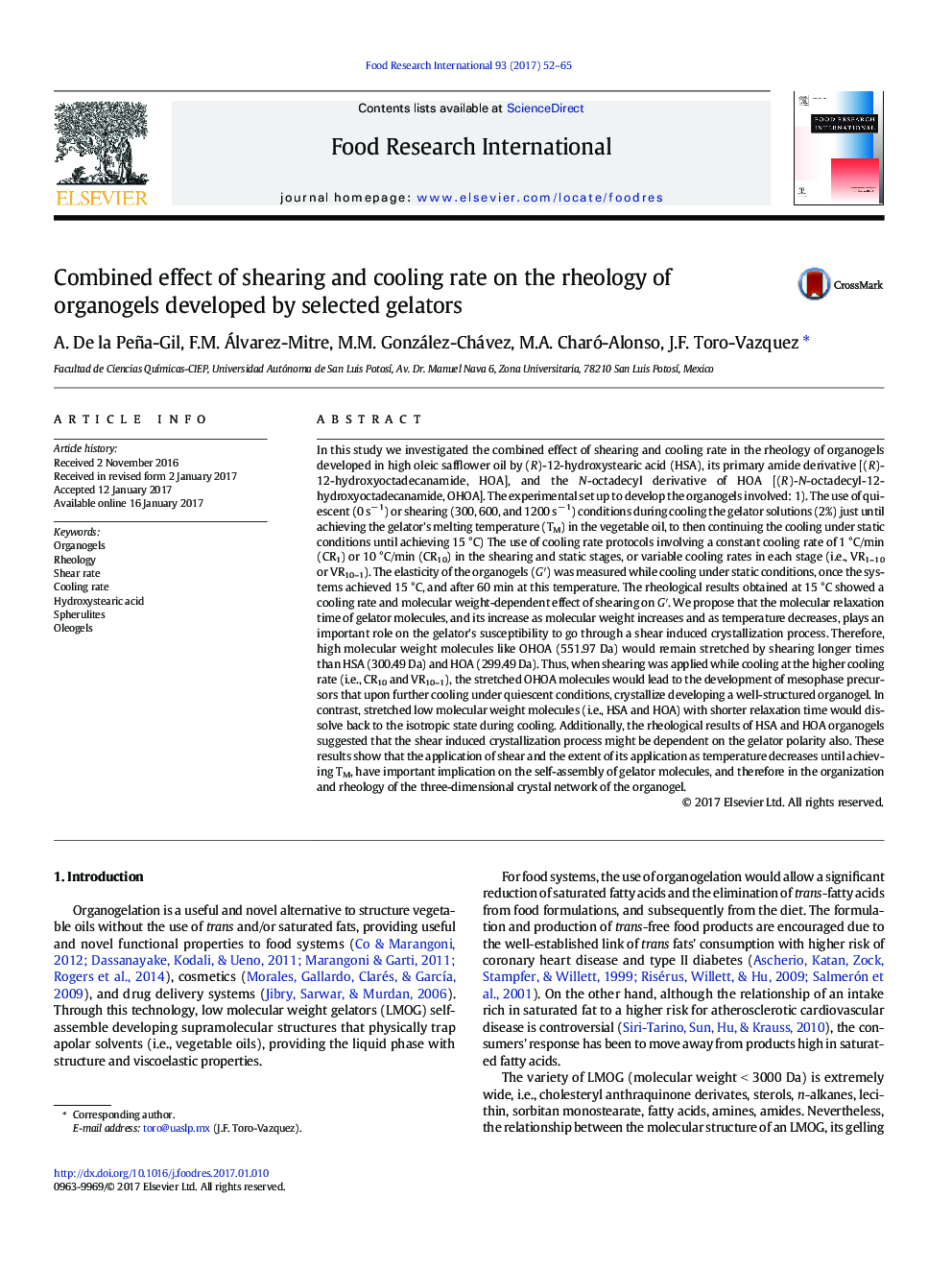| Article ID | Journal | Published Year | Pages | File Type |
|---|---|---|---|---|
| 5767937 | Food Research International | 2017 | 14 Pages |
â¢We studied the combined effect of shearing and cooling rate during organogelation.â¢During the cooling stage the cooling rate had greater effect on the gels' elasticity.â¢In contrast, in the isothermal stage shearing affected the gels' elasticity.â¢The shearing effect depended on the gelator's molecular weight and the cooling rate.â¢The shearing effect is associated with the molecular relaxation time of the gelator.
In this study we investigated the combined effect of shearing and cooling rate in the rheology of organogels developed in high oleic safflower oil by (R)-12-hydroxystearic acid (HSA), its primary amide derivative [(R)-12-hydroxyoctadecanamide, HOA], and the N-octadecyl derivative of HOA [(R)-N-octadecyl-12-hydroxyoctadecanamide, OHOA]. The experimental set up to develop the organogels involved: 1). The use of quiescent (0 sâ 1) or shearing (300, 600, and 1200 sâ 1) conditions during cooling the gelator solutions (2%) just until achieving the gelator's melting temperature (TM) in the vegetable oil, to then continuing the cooling under static conditions until achieving 15 °C) The use of cooling rate protocols involving a constant cooling rate of 1 °C/min (CR1) or 10 °C/min (CR10) in the shearing and static stages, or variable cooling rates in each stage (i.e., VR1-10 or VR10-1). The elasticity of the organogels (Gâ²) was measured while cooling under static conditions, once the systems achieved 15 °C, and after 60 min at this temperature. The rheological results obtained at 15 °C showed a cooling rate and molecular weight-dependent effect of shearing on Gâ². We propose that the molecular relaxation time of gelator molecules, and its increase as molecular weight increases and as temperature decreases, plays an important role on the gelator's susceptibility to go through a shear induced crystallization process. Therefore, high molecular weight molecules like OHOA (551.97 Da) would remain stretched by shearing longer times than HSA (300.49 Da) and HOA (299.49 Da). Thus, when shearing was applied while cooling at the higher cooling rate (i.e., CR10 and VR10-1), the stretched OHOA molecules would lead to the development of mesophase precursors that upon further cooling under quiescent conditions, crystallize developing a well-structured organogel. In contrast, stretched low molecular weight molecules (i.e., HSA and HOA) with shorter relaxation time would dissolve back to the isotropic state during cooling. Additionally, the rheological results of HSA and HOA organogels suggested that the shear induced crystallization process might be dependent on the gelator polarity also. These results show that the application of shear and the extent of its application as temperature decreases until achieving TM, have important implication on the self-assembly of gelator molecules, and therefore in the organization and rheology of the three-dimensional crystal network of the organogel.
Graphical abstractDownload high-res image (284KB)Download full-size image
